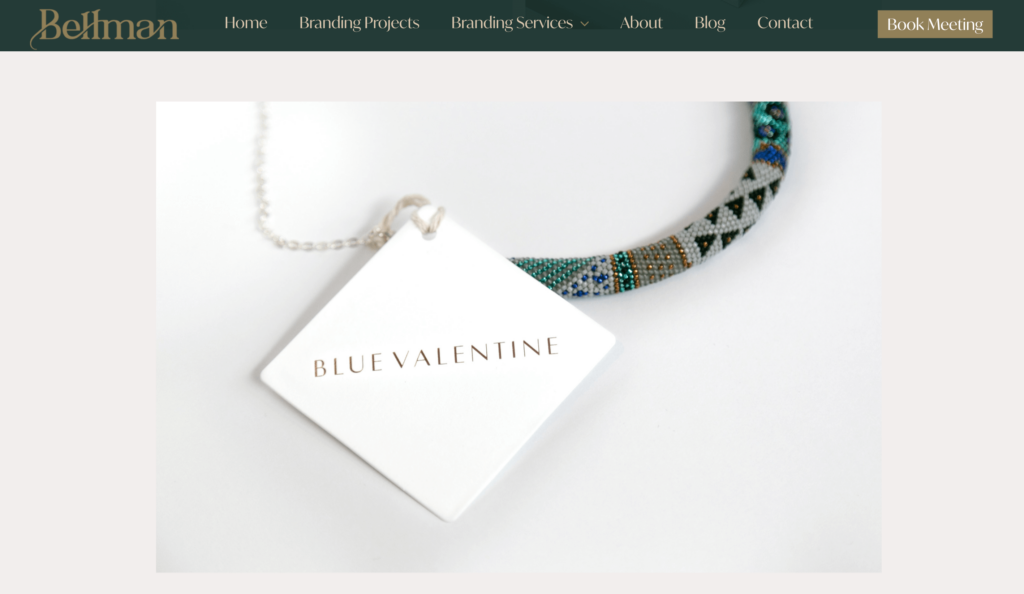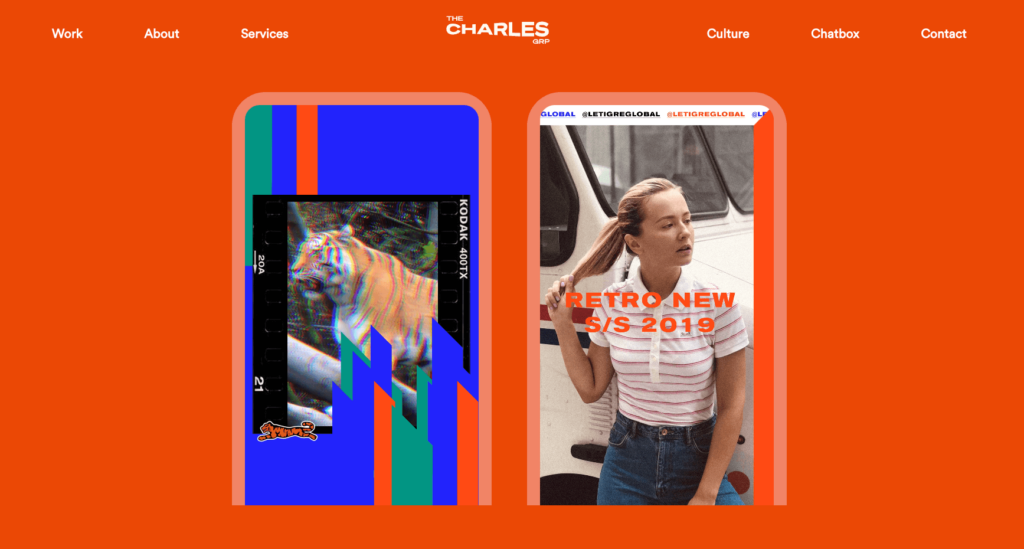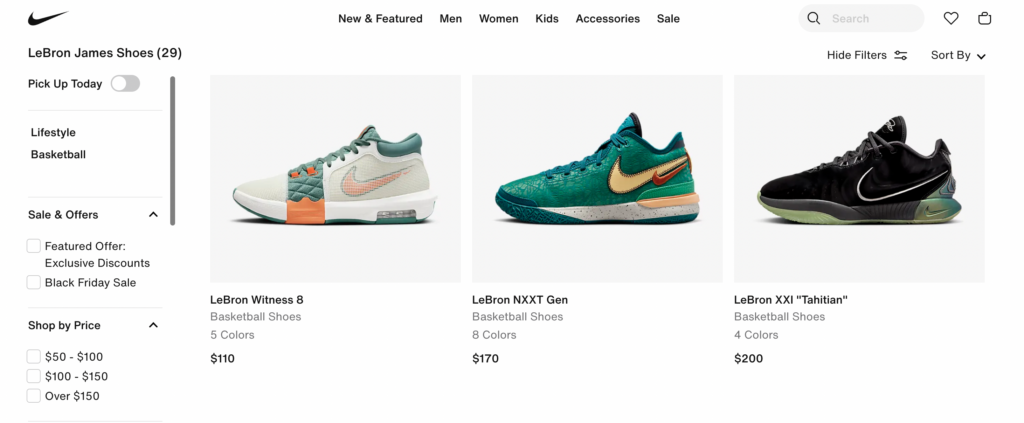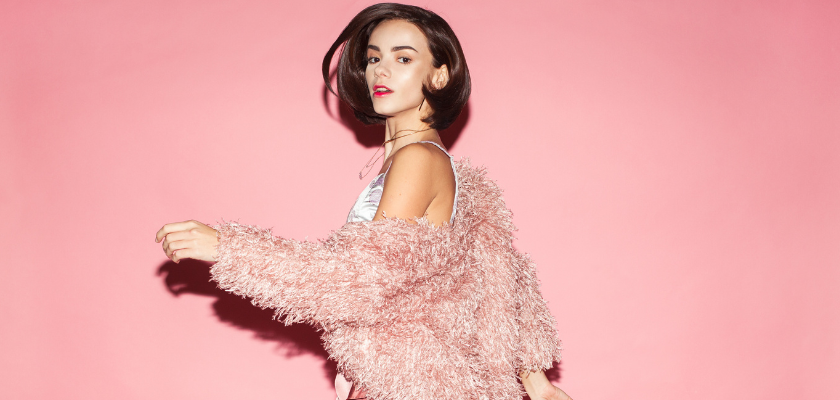Iconic Strategies & Ideas in Fashion Branding: Create Your Signature Identity
Trends evolve as swiftly as a runway model’s strut in the world of fashion. However, one aspect remains timeless and crucial – fashion branding.
Brand is so much more than a logo; it’s not even just about creating garments. It’s the narrative that weaves seamlessly into the fabric of consumer consciousness. Take Nike, for example, with its iconic swoosh—a symbol recognized globally. In fact, Nike boasted the highest brand value among mass-market clothing brands, reaching approximately $110 billion in 2022. This shows us the crucial role branding plays in shaping consumer perceptions and building enduring brand value.
We live in an era of digital dominance, and the art of fashion branding has transcended mere logos and slogans. The goal of fashion branding is to build a distinctive identity that not only stands out in the crowded marketplace but also resonates with the discerning hearts of consumers.
The Essentials of Fashion Branding: Building a Distinctive Identity
At the core of fashion branding lies the creation of a distinctive identity that sets your brand apart from the other choices available. It’s about crafting an image that speaks volumes, even before the first stitch is seen or the first accessory is adorned. Think of it as the DNA of your brand, comprising the logo, visual elements, messaging, and the elusive ‘X’ factor that leaves an indelible mark in the minds of your audience.
Defining Brand Identity
The combination of elements that best represents your fashion brand’s essence is called your brand identity. It’s not merely a logo or a catchy tagline; it’s the embodiment of your brand’s personality, values, and aspirations. Think of it as the silent ambassador that introduces your brand to the world before a single garment is seen or a word is spoken.
Let’s a take look at the best brand identity examples. Gucci’s vibe is like a mixtape of boldness and timeless elegance. Now, about that double G logo—it’s the OG, standing for Guccio Gucci, the founder’s initials. As for colors, Gucci goes all out with a bold palette – think vibrant greens, rich reds, and luxurious gold accents. It’s an excellent example of brand identity for fashion brands, going beyond just looking good. Every stitch tells a story of craftsmanship, making Gucci a statement of luxury in every thread.
The Elements of Distinction
To build a distinctive identity, you should consider the multifaceted elements that contribute to the visual and emotional impact of your brand. Your logo should be memorable and reflective of your brand’s character. Visual elements, color schemes, and design aesthetics should harmonize, creating a cohesive and instantly recognizable brand image.

A great example is Bellman Agency’s work with bespoke jewelry brand Blue Valentine. They refreshed the logo, set up content guidelines, and developed cohesive design concepts for all communications, including social media. This comprehensive rebranding helped Blue Valentine stand out, aligning its image with the bold and daring nature of its target audience.
Equally vital is your brand’s voice – the language and tone used in communication. Whether it’s the quirkiness of youthful streetwear or the refined elegance of high fashion, your brand’s voice should resonate with your target audience, creating a lasting impression.
Consistency as a Guiding Principle
One thing to keep in mind is that a distinctive brand identity is built on consistency. From your website to social media platforms, every touchpoint should echo the same narrative and visual language. Consistency builds trust and familiarity, making your brand instantly recognizable even in the world of shifting trends. However, if implementing these strategies feels overwhelming or if you’re seeking expert guidance, consider partnering with fashion marketing agencies. These agencies specialize in navigating the complexities of the fashion industry, ensuring that your brand’s message remains cohesive and compelling across all channels. With their expertise, you can elevate your brand and establish a lasting presence in the competitive market.
Evolving without Losing Essence
We’ve already mentioned above that consistency is essential. However, there’s another element that is equally important. Fashion is about innovation and adaptation, thus you need to allow your brand to evolve. Your brand identity should be a living entity that adapts to the changing tides of fashion while staying true to its core essence. Balancing tradition with innovation ensures your brand remains relevant and appealing to both longtime supporters and new audiences.
Innovative Fashion Brand Strategy: Key Approaches for Modern Markets
A successful fashion brand strategy extends beyond traditional boundaries. Social media is the new fashion runway. So what you should consider is to be able to embrace innovation, benefit from the power of influencers, and weave sustainability into the very fabric of your brand. These components are now indisputable parts of fashion branding. That is why it’s important to understand that a brand thrives on engagement, authenticity, and adaptability. The modern market demands branding strategies that transcend the ordinary, leveraging the latest digital marketing trends to create an immersive brand experience.
Embracing Digital Dominance
Your digital footprint should be a seamless extension of your brand narrative. From engaging websites to immersive social media experiences, your brand should be embracing digital dominance by establishing an incredible online presence.
Leveraging Social Media Platforms
Ah, the power of a well-timed tweet or an Instagram post that stops the scroll! Social media is the place where your fashion brand should thrive. We’re all aware that social media has become something way more than just a platform. But it’s always good to remind ourselves that social media is where your brand fosters a community that transcends geographical boundaries. You can also dive into the world of influencer marketing, which we’ll be talking about in a second, live streams and interactive content.
Incorporating Influencer Marketing and Collaborations
Yes, yes, and yes. You’ve heard this a million times but you need to benefit from the power of influencer collaborations. But, don’t do it the old way. With the fast-paced world of social media, people have now short attention spans, and most importantly, they crave authenticity. So what you should be doing is to find an influencer with whom you can work consistently and ultimately build an authentic relationship. This will help your audience to warm up to your brand first and then start shopping for your brand.
Remember, this strategy is about authenticity and not about sales. However, we live in a world where anyone with a smartphone is a potential influencer. For this reason, finding the most suitable influencer for your brand may not always be easy. At this point, you might consider collaborating with influencer marketing agencies. In addition to offering strategies that will bring your brand to the forefront in the most accurate and effective way, these agencies can also help you identify the most suitable influencer.
We’re pretty sure that we’ve all witnessed the magic that unfolds when carefully chosen influencers align seamlessly with a brand’s identity. It’s true that the main goal is to reach more audience. However, it’s also about credibility, authenticity, and creating a ripple effect that extends far beyond a single post.
Sustainability and Ethical Practices
Our habits and our world consist of quickly consumable items. But we know that we need to approach this consumption madness more consciously. In addition to making conscious purchases where we are consumers, when we look at it as a brand, we need to take the necessary steps when it comes to sustainability and ethics.
As a fashion brand, weaving sustainability into your strategy is not just a nod to environmental consciousness; it’s a statement of values that resonates with conscious consumers. Thus, you should incorporate eco-friendly materials, ethical manufacturing processes, and transparent supply chains into your brand story. This not only positions your brand as socially responsible but also taps into a growing market segment that values ethical choices.
The new generation of consumers, especially Gen Z, are growing up to be much more conscious when it comes to animals and sustainability compared to older generations. Not only that, they started to react against many brands that do animal testing or are not sustainable. For this reason, sustainability and ethical practices will be much more important for your brand, especially if your target audience is Gen Z.
Veja has an innovative approach to sustainable fashion, exemplifying an ecological ethos in the fashion industry. The brand challenges conventional norms for sure. Not only that, Veja also pioneered a new era of environmentally conscious footwear, proving that style and sustainability can coexist harmoniously.
Data-Driven Decision-Making
Data is gold, and the key to unlocking the success of your brand lies in data-driven decision-making. You need to analyze in order to understand and learn about consumer behavior and create strategies accordingly. In this process, you can better discover consumer preferences and market trends, and develop or change your branding strategy in line with the outputs.
From ads that really hit the mark to shopping experiences tailored just for you, using data isn’t just smart—it’s like having a secret weapon for your brand strategy. It’s all about staying ahead and giving your audience exactly what they want in this ever-changing game.
Fashion Brand Strategy Examples: Success Stories and Lessons Learned
1. The Relaunch of Le Tigre by The Charles

The Charles NYC gave Le TIGRE a fresh new look by bringing back its bold, retro vibes. They focused on the iconic tiger logo, bright colors, and classic polo stripes to make the brand pop again. Their rebranding included updated media strategies, creative content, and a refreshed visual style that honors Le TIGRE’s heritage while standing out in the fashion world.
2. Enya Mond: Collaboration with Fook Communications
Fook Communications excelled in branding for Enya Mond, a high-end parenting accessories company. They crafted a sophisticated brand that elegantly balanced fashion with the empathy required by its target audience – mothers and parents. This project went beyond mere aesthetics; it built a community where parents felt seen and understood. Through strategic positioning, visual identity, and comprehensive marketing, Fook Communications created a brand that resonates with elegance and warmth, establishing Enya Mond as a leader in luxury parenting products.
2. Mary Ching: Branding by Skywire
The Mary Ching case study illustrates Skywire’s collaboration with the luxury shoe, jewellery, and cashmere designer. Skywire’s mission was to launch a Shopify e-commerce store aimed at the UK and China markets, while also encapsulating the unique personality of the Shanghai-based designer. This involved creating a distinctive visual experience that transports customers from Shanghai to London, into the “Chingdom” – Mary Ching’s own world.

Development of the overall brand identity, “The World of Mary Ching,” informed the creation of a brand bible. This foundational work guided the creative direction and design approach for the brand’s website. UK-based agency Skywire implemented a custom Shopify theme that included engaging features like a parallax effect on the homepage, memoji animations of the designer, and a scrollable China-Britain Great Wall in the “Chingdom” Page.
3. Patagonia: Storytelling and Brand Narrative
Patagonia has consistently integrated its commitment to environmental sustainability into its brand narrative. Through initiatives like the “Worn Wear” program, where customers can trade in used Patagonia gear, the brand emphasized longevity and tried to reduce environmental impact.
The outcome of this storytelling approach has cultivated a dedicated community of environmentally conscious consumers. Patagonia’s transparency and activism have not only boosted brand loyalty but also attracted new customers who align with the brand’s values.
4. Nike: Influencer Collaborations
Nike strategically collaborates with a diverse range of influencers, athletes, and celebrities. However, we’d like to highlight one notable collaboration between the brand and basketball player LeBron James, where he leverages his influence to promote show lines and enhance the brand’s connections with the basketball community. In fact, their collaboration reached its peak in 2015 when James signed a historic $1 billion lifetime contract with Nike.

The influencer collaborations contribute to Nike’s widespread appeal across various demographics. By associating with influential figures in sports and culture, Nike continues to strengthen its position as a lifestyle brand that transcends athletic apparel. No doubt that all of Nike’s digital marketing strategies have always been influential for millions of people around the world.
5. Burberry: Customer Engagement through Social Media
Burberry engages customers through visually stunning content on Instagram providing behind-the-scenes glimpses of fashion shows, exclusive product previews, and interactive campaigns. User-generated content is also encouraged through branded hashtags, fostering a sense of community. The brand has over 20 million followers on its Instagram account, making it one of the most followed luxury brands.
The brand’s active presence on social media has resulted in increased brand visibility and engagement. Burberry’s digital marketing strategies help the brand to attract a younger demographic, reinforcing its status as a forward-thinking luxury fashion brand.
6. Zara: Fast Fashion and Trend Responsiveness
Zara’s marketing strategy is a success and this is largely due to its quick turnaround and agile supply chain. The brand’s fast fashion model has led to increased sales and customer engagement. Zara rapidly responds to trends and thus positions itself as a trendsetter in the fashion industry. This has actually allowed the brand to attract a large customer base seeking the latest styles. The outcome of this strategy is definitely the creation of novelty for customers. Consumers visit stores or the app frequently to discover new arrivals.
7. Lululemon: Community Building
You’ve probably heard about the term “Range Rover mom.” Have you heard about the “Range Rover mom jacket”? If you haven’t heard of the Lululemon ‘define jacket’ being dubbed the ‘Range Rover Mom Jacket,’ you might not be part of the Gen Z TikTok scene. This viral trend has brought together millions of users, creating a unique community centered around Lululemon and adding an element of urgency to owning this popular clothing piece.
@delphinecerise having a moment in my new lulu define jacket👸🏽 #lululemon #lululemondefinejacket #lululemonbbleffect #lululemonhaul #rangerovermom #thatgirl #gymoutfit ♬ original sound – 𓆩ᥫ᭡𓆪
Interestingly, Lululemon didn’t intentionally promote the jacket, yet it stands as one of the best examples of user-generated content (UGC) and community building. This aligns seamlessly with Lululemon’s overarching strategy, where community building is the linchpin of its brand identity. From in-store yoga classes to wellness workshops and community-run clubs, Lululemon fosters a shared passion for an active lifestyle, making it a standout in the world of fitness and fashion.
Cultivating Brand Loyalty: Advanced Techniques in Fashion Branding
Cultivating brand loyalty is a continuous process. Beyond the initial allure of a logo or a trend, the true triumph lies in creating a dedicated community of brand advocates. Let’s explore advanced techniques that go beyond the transactional.
Emotional Connections that Transcend Trends
If you want to cultivate brand loyalty, you need to forge emotional connections with your audience. The ultimate goal can be selling your products. But you need to become an integral part of your customers’ lives first to be able to increase sales. Fashion branding success comes when you understand the importance of resonating with your audience and tapping into their emotions.
Exclusive Membership Programs and Loyalty Rewards
Exclusivity is a rare commodity nowadays. However, there are fashion brands that excel in cultivating loyalty, achieving it by employing exclusive membership programs and loyalty rewards. Don’t we all love it when we’re offered a special price or early access to sales? These gestures create a sense of belonging among us as customers for the brands we love. Similarly, you can apply the same approach to your fashion brand, fostering lasting relationships with loyal customers and expanding your reach to a wider audience.

One example of this is Sephora’s Beauty Insider Program. Sephora’s Beauty Insider program offers a tiered loyalty structure, providing customers with points for each purchase, which can be redeemed for exclusive products or experiences. The program also includes birthday gifts, early access to sales, and personalized product recommendations, creating a personalized and rewarding beauty community.
Personalization and Customer Experience
The era of one-size-fits-all marketing is long gone. Advanced techniques in fashion branding involve tailoring experiences to individual preferences. Personalization goes beyond just addressing customers by name; it’s about anticipating their needs, curating personalized recommendations, and creating a seamless, enjoyable shopping journey. Exceptional customer experiences leave a lasting impression, transforming satisfied customers into loyal brand advocates.
You can considerably improve your efforts regarding personalization and customer experience by taking advantage of the expertise of branding agencies. These agencies specialize in understanding consumer behavior, analyzing data, and creating tailored strategies for brands.
Leveraging Customer Feedback and Engagement
You have to listen to your audience.
We believe it is one of the things that we can’t stress enough about. If you’ve read the whole article until here then it means you’re determined to create a successful fashion branding. So, listen to your audience. It is not a courtesy, no. It’s a strategic imperative. Successful fashion brands actively engage with their customers, seeking feedback and involving them in the brand’s evolution.
Social media platforms, surveys, and interactive events become channels for dialogue. By incorporating customer feedback, brands not only show that they value their audience but also adapt to meet their evolving expectations.

Storytelling in Fashion Branding: Crafting a Compelling Narrative
Every single thing in the world of fashion tells a story. This makes it especially important for your fashion brand to have a solid narrative.
The Power of Fashion Narratives
Fashion is a language that speaks volumes without uttering a word. Your brand narrative should be a carefully crafted story that unfolds with every collection, campaign, and interaction. Essentially, you’re creating a world where your brand becomes a character in your customers’ personal journey. These narratives can be the inspiration behind your collection or the values your brand stands for. One thing you should keep in mind is that narratives humanize your brand.
Creating a Visual Symphony: Imagery and Storytelling
Last but not least, we have to talk about the importance of visuals. They are a powerful language. The imagery associated with your brand should amplify and complement your narrative. From the design of your website to the visuals in your advertising campaigns, each element should contribute to telling your story visually. High-quality, evocative imagery enhances the emotional impact of your narrative, leaving a lasting impression on your audience.
Conclusion: Crafting Your Signature Identity in Fashion Branding
Crafting your signature identity can be daunting as it demands a symphony of elements. As long as you apply the effective strategies mentioned throughout the article, your brand identity will resonate as a distinctive signature—easily recognizable amidst the diverse choices. Therefore, embrace innovation as your guiding star, adapt to modern markets by leveraging digital landscapes, and set trends rather than just following them.
As you step into the dynamic world of fashion branding, remember – your brand is more than a label; it’s a story waiting to be told. Craft it with passion, innovation, and an unwavering commitment to leaving an indelible mark in the hearts and wardrobes of your audience.
Now, go, and let the world witness the emergence of your iconic fashion brand, a signature identity that stands the test of time and trends.























